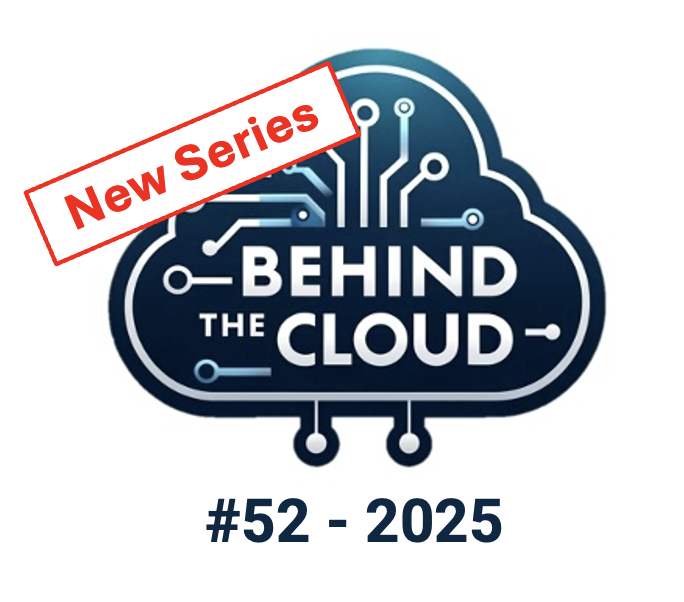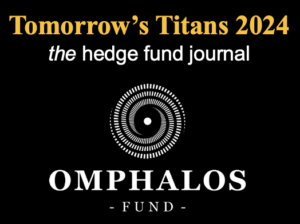

#52 - Behind The Cloud: From Agents to Allies - The Rise of Collaborative Intelligence in Quant Investing (1/4)
AI Agents Are Everywhere. But Are They Smart(er) Together?
July 2025
From Agents to Allies: The Rise of Collaborative Intelligence in Quant Investing
In this four-part series, the Omphalos Research Team explores the growing role of agentic AI in systematic investing. From today’s signal-generating trading agents to tomorrow’s intelligent, aware, and collaborative agents, we examine how multi-agent systems can reshape decision-making in finance.
The new series of Behind The Cloud offers a behind-the-scenes look at how Omphalos Fund uses AI not as a black box, but as a modular, scalable framework for robust and adaptive trading – and what comes next as portfolios learn to think and act as one.
Agents Are Everywhere. But Are They Smart(er) Together?
Every few weeks, another tech headline breaks through the noise:
“AI Agents Can Now Plan Entire Holidays”.
“Autonomous AI Teams Code Software Without Human Input”.
“Multi-Agent Simulations Show Emergent Behavior”
If you’ve followed developments in artificial intelligence lately, you’ve probably noticed one theme standing out from the rest: the rise of agentic AI.
From travel planning to research automation, companies are increasingly building systems made not of one large model, but of multiple intelligent agents — each with its own role, memory, and logic, working together toward a goal. They may retrieve data, generate text, reason through steps, or evaluate outcomes — sometimes in sequence, sometimes in parallel, sometimes even in negotiation.
But beneath the demos and prototypes, a bigger question is taking shape:
What happens when AI agents stop acting alone — and start thinking together?
From Hype to Infrastructure
This isn’t just a Silicon Valley experiment anymore. Financial firms are watching closely — and in some cases, already experimenting.
- At HSBC, generative AI agents are being evaluated to automate up to 90 % of back-office tasks, shifting from process automation to decision support.
- Schroders and Google Cloud have prototyped a multi-agent research assistant that dramatically accelerates company analysis and portfolio monitoring.
- And according to Gartner, while 40% of agentic AI projects could fail by 2027 due to premature hype, the successful ones will reshape industries by creating “cooperative intelligence systems.”
So what does this mean for investing — and for Omphalos Fund, a systematic manager that has been building modular AI infrastructure long before “multi-agent” became a buzzword?
In fact, we started working on this concept seven years ago. Our Trading Agents have been live in production for more than three years, and we continue to refine, expand, and evolve their architecture week by week.
While many are just now exploring what agentic AI could do, we’ve been shaping it into an operational reality — with performance to show for it.
From Single Genius to Team Intelligence
The world of quantitative investing already uses intelligent systems — models that analyze market data, forecast signals, and optimize positions. But traditionally, these systems are centralized: one pipeline, one logic, one set of rules.
What if, instead, we imagined the investment process as an intelligent ecosystem?
- One agent forecasts short-term volatility in Japanese equities.
- Another evaluates macro momentum in European rates.
- A third analyzes risk exposures in the current portfolio.
- A fourth decides whether to act — or wait.
- A fifth critiques the decision and adjusts thresholds based on evolving goals.
That’s NOT science fiction. That’s where we’re going.
Introducing the Series: From Agents to Allies
In this new Behind the Cloud series, we’re opening up the design and evolution of our Trading Agent ecosystem at Omphalos Fund. We’ll show how modular agent systems are already working in production — and what’s next.
Chapter 1 – Introduction to Agentic Intelligence in Finance
What agentic AI is (and isn’t), why it’s relevant in finance, and what frameworks like AutoGen, CAMEL, and LangGraph are teaching us about AI that reasons and interacts.
Chapter 2 – The Existing Trading Agents at Omphalos Fund
A behind-the-scenes look at our current infrastructure: how hundreds of AI agents generate market signals, while strategy and risk management remain strictly hardcoded.
Chapter 3 – The Future: From Intelligent to Collaborative Agents
We map the road ahead: intelligent decision points, agent awareness across the portfolio, and ultimately, collaborative AI teams that align to a global portfolio objective.
Why This Matters
This isn’t about AGI. It’s not about hype. It’s about building real systems that think modularly, behave predictably, and perform intelligently — together.
At Omphalos, we believe the future of AI in investing isn’t about replacing humans with one big brain. It’s about designing composable intelligence, where agents specialize, communicate, and coordinate — and in doing so, drive performance that is adaptive, explainable, and scalable.
We hope you’ll join us on this journey.
👉 Next stop: Chapter 1: Introduction to Agentic Intelligence in Finance
Stay tuned for our series in Behind The Cloud, where we’ll continue to explore the frontiers of AI in finance.
If you missed our former editions of “Behind The Cloud”, please check out our BLOG.
© The Omphalos AI Research Team – July 2025
If you would like to use our content please contact press@omphalosfund.com



